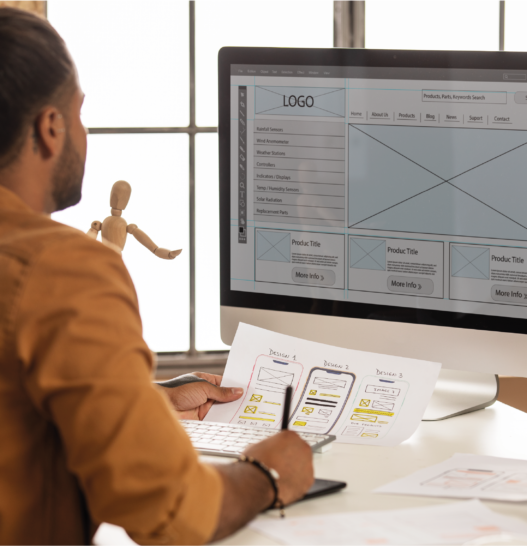The last article was already about money and usability (see “3 reasons why usability & user experience not only save money, but also generate it“). The focus of the last post was on saving money by using usability & user experience methods. It was described that usability & user experience can save money on the one hand and increase profit on the other hand. This article is also about usability and money. In this article, however, the focus is rather on what usability & user experience costs. Here I want to break with the prejudice that usability & user experience are immensely expensive and therefore can only be paid for by large corporations.
Of course it is true to say that usability & user experience measures cost money. This leads to the fact that usability & user experience are often seen as a luxury or “nice-to-have”. Especially in small and medium sized companies this opinion is very common. Unfortunately, however, it is JUST small and medium-sized companies that need usability & user experience, as they often cannot afford to do without it. Why? The business model of many small and medium sized companies is based on offering one product/service or very few products/services. With fewer staff available, these companies usually put almost all of their resources into developing or improving their product. However, if this one product does not find favor with the client – be it due to poor usability or be it due to “wrong functionality” – then this threatens the existence of small and medium-sized companies. In case of doubt, a large company closes the respective development department or restructures it. Smaller companies often do not have this option. They are therefore much more dependent on the fact that one development really remains THE one development and that the product is subsequently sold sufficiently well. This is where usability & user experience measures help to avoid expensive mistakes.
Now some of you will think: Yes, well, that may be, but we haven’t budgeted for it. Unfortunately, this is a mistake that is often made and leads to the company having its back to the wall at some point. You can see from the sales figures and the customer feedback: something is wrong with my product. Unfortunately, in this situation, people often don’t have a clue what exactly is wrong. Often developers and companies then flee into adding new features or extending existing features. This can help – but it doesn’t have to, if this is not the problem. In most cases, it’s not the product’s features that are a problem, but the client’s access to the features – in other words, the user interface. This is where usability & user experience measures offer a way to escape. They help to bring light into the darkness and to find out where the problems actually lie. These can then be targeted and eliminated. Here in particular, it pays off to proceed in a targeted manner and not to spend a long time fishing in the dark and burning development money. But what do usability & user experience methods cost?
Some usability & user experience methods – done by yourself – cost you no more than a few sheets of paper, a pencil, an eraser, some time and maybe a pizza. How to do it? For example, use methods like paper prototyping yourself. Usually, when developing software without usability & user experience measures, the team defines a user interface and then codes it. By the time complaints or change requests come in, an extreme amount of time and effort has already gone into the implementation. You can avoid this by simply recording your initial user interface ideas and showing them to a few of your good clients over pizza. Then you can get quick feedback and maybe even redesign the interface together with your client. Of course, this is not the best possible way to implement usability & user experience. For example, there is only one interface variant. You only talk to one or two people instead of many. Additionally, you know the person, so the feedback might be friendlier than with neutral persons. In addition, you may have no experience in conducting interviews yourself, … and so on and so forth. There are many things that can be done better about the approach. BUT integrating this kind of usability & user experience into the development is clearly better than no usability & user experience and I’m sure you can prevent some of the biggest bloopers this way.
If you do eventually get to the point of needing professional usability & user experience services, they are not always complex and expensive either. For example, if you only want an initial expert assessment of the usability & user experience of your user interface (or better yet, your user interface idea), this is perfectly possible with a daily rate. Some agencies even offer introductory packages that help you gather initial insights and at the same time find out, in a cost-saving way, whether an expert assessment is of any use to you at all. For this purpose, we offer the Usability Quick Check, for example. This offers feedback from 2 experts for 1 hour and costs 199€ as an introductory price (plus travel costs). With these introductory offers, it should therefore be possible to get professional feedback even with the smallest budget. However, if you are dealing with questions about the acceptance of a product, you will hardly be able to avoid “real” user tests and surveys. But here, too, there are many ways to actively shape the price. For example, by recruiting your own test subjects for the test. Good usability & user experience agencies support you in applying exactly the right methods. This also includes adapting the scope of the methods to the available budget.
As you can see, usability & user experience measures cost money. But not as much as you might think at first glance. In addition, you will save money in the long run by using usability & user experience. I hope I could encourage you to take the first steps towards usability & user experience, no matter if you do it yourself or with the help of providers. Usability & User Experience are not as expensive as you think.
The last two posts have focused heavily on why you should implement usability measures. In our next posts, we will turn our attention to a completely different topic: Psychological product design. As you may have seen on our homepage, we employ an interdisciplinary team. Three of our employees (and some of our freelancers) are psychologists by training and bring a completely different aspect to product design: What are the user’s needs, and how can I take them into account when designing products? Over the next weeks and months, we would like to introduce you to this way of thinking. The next post will first be about why needs are important, before we subsequently introduce a need in each subsequent post and explain how to take it into account in development. We’d love to have you join us again then.



